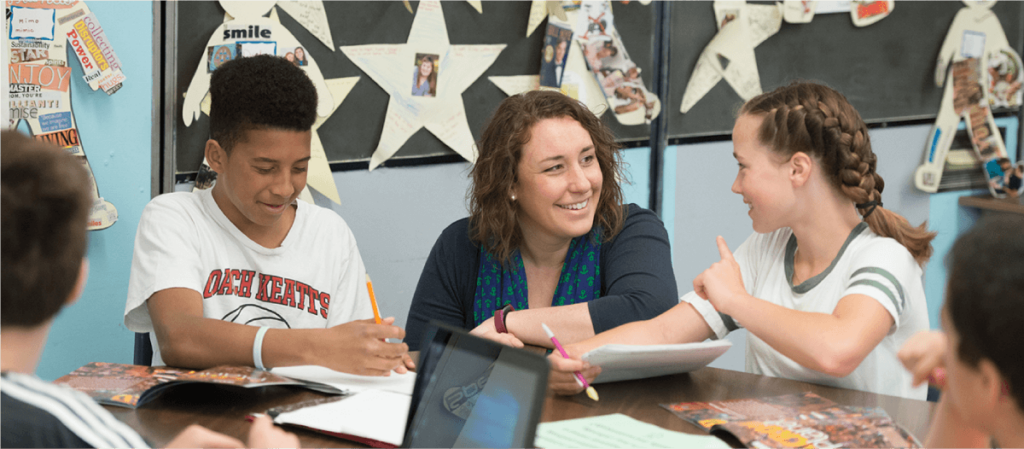
Take a moment to pause and reflect on your students and their success in keeping on track academically, socially, emotionally, and behaviorally. What factors influence their success? The subject matter? The time of day? Is there consistency across the week? Are there a few students who need more support, or would a whole-class approach be more conducive?
Once you have considered these factors, ask yourself: how can I facilitate their ability to stay on track? The answer lies in being persistent and consistent. By utilizing the five strategies listed below, you can help your students grow in their social, emotional, and academic competencies by creating a focused learning environment where expectations are high and success is guaranteed. As you read, consider new practices you want to incorporate and how you can reinvigorate and improve the ones you already use.
The old proverb “All work and no play makes Jack a dull boy” also holds true in the classroom. We all need a break sometimes, especially when we are expending a lot of mental energy. If Jack is your student, and he is not feeling a sense of belonging, significance, and fun, he will create his own fun, which will inevitably lead to him getting off track. Instead, use energizers and brain breaks to provide students with short, playful activities that can be either lively or calming. These activities also incorporate academic skills, so students are learning and growing while smiling and strengthening their relationships with other members of the classroom community.
Learn more: See the energizer People to People in action!
A piece of wisdom that is commonly attributed to Mother Teresa states, “Kind words can be short and easy to speak, but their echoes are truly endless.” When you’re in the middle of a challenging task, a poor choice of words from someone else can make it easy to give in to the temptation to quit, while reinforcing words can help motivate you to keep pushing through difficulties. Provide students with specific feedback that is focused on action to inspire continued effort and build endurance and grit.
Learn more: Check out these sentence stems and consider how you can use them to support your students.
Whether you subscribe to the theory that communication is 50 percent, 80 percent, or 93 percent nonverbal, we can all agree that it plays a significant role in how we interact with our environment, others, and the task at hand. In the classroom, consider how you can use eye contact to remind a student of what they should be doing. Also, generate hand gestures to signal to the class the need for calm bodies, self-control, noise reduction, and more. These can also be used with individual students to support their growth without everyone in the class hearing their name . . . again. Remember: tone, pitch, and body language can either enhance or detract from your spoken message. Consider recording yourself to reflect on your nonverbal cues and communication. They may be impacting your classroom and students more than you know.
Learn more: Take a moment to check out what it means to be a “face fancier”!
Taking a mental break can support positive physical and mental health. Just five to fifteen minutes can give your nervous system time to calm down, allowing your brain to be at its optimal state for learning and productivity. Think about when in the day you can provide your students with this gift of a mental recharge by offering them time for quiet, independent, and self-selected activities. These activities can include reading, drawing, doing a puzzle, writing, or other calming options you provide. I have noticed that, at the end of the four-day Responsive Classroom Elementary Core Course, quiet time is one practice in particular that adults appreciate experiencing during the week. If it helps us, it will help our students, too.
Learn more: Take a few minutes to read about quiet time and how you can structure it in your setting.
Take ten deep breaths. Take a walk. Think happy thoughts. Visualize yourself in your favorite place. Repeat a calming phrase. Do yoga. The options for finding calm are endless, and preferences vary from person to person. Share a new strategy every week with students, and make a chart of all their options. When students get the chance to practice these strategies in a moment of calm, they will be more successful at regaining their mental focus after periods of frustration and agitation. A quiet spot in the classroom helps, too. Whether it’s a certain chair, window, or corner in the room, allow students the opportunity to learn self-regulation by having a place where they can go to breathe and regain their composure.
Learn more: If you don’t currently have a space dedicated to giving students a break so they can build self-regulation skills, discover how to introduce one into your classroom here.
Engaging in these five strategies is a great way to be persistent in helping students get back on track and stay there. However, being consistent is just as important. If you only use effective strategies 50 percent of the time, students can only ever be 50 percent successful. So make a plan to keep yourself on track. Which one will you focus on with your students tomorrow?
Jenni Lee Groegler Pierson is a contributing author for Empowering Educators: A Comprehensive Guide to Teaching Grades 3, 4, 5 and author of multiple Quick Coaching Guides, including Joyful Gatherings and Seeing That Students Belong and Are Significant.